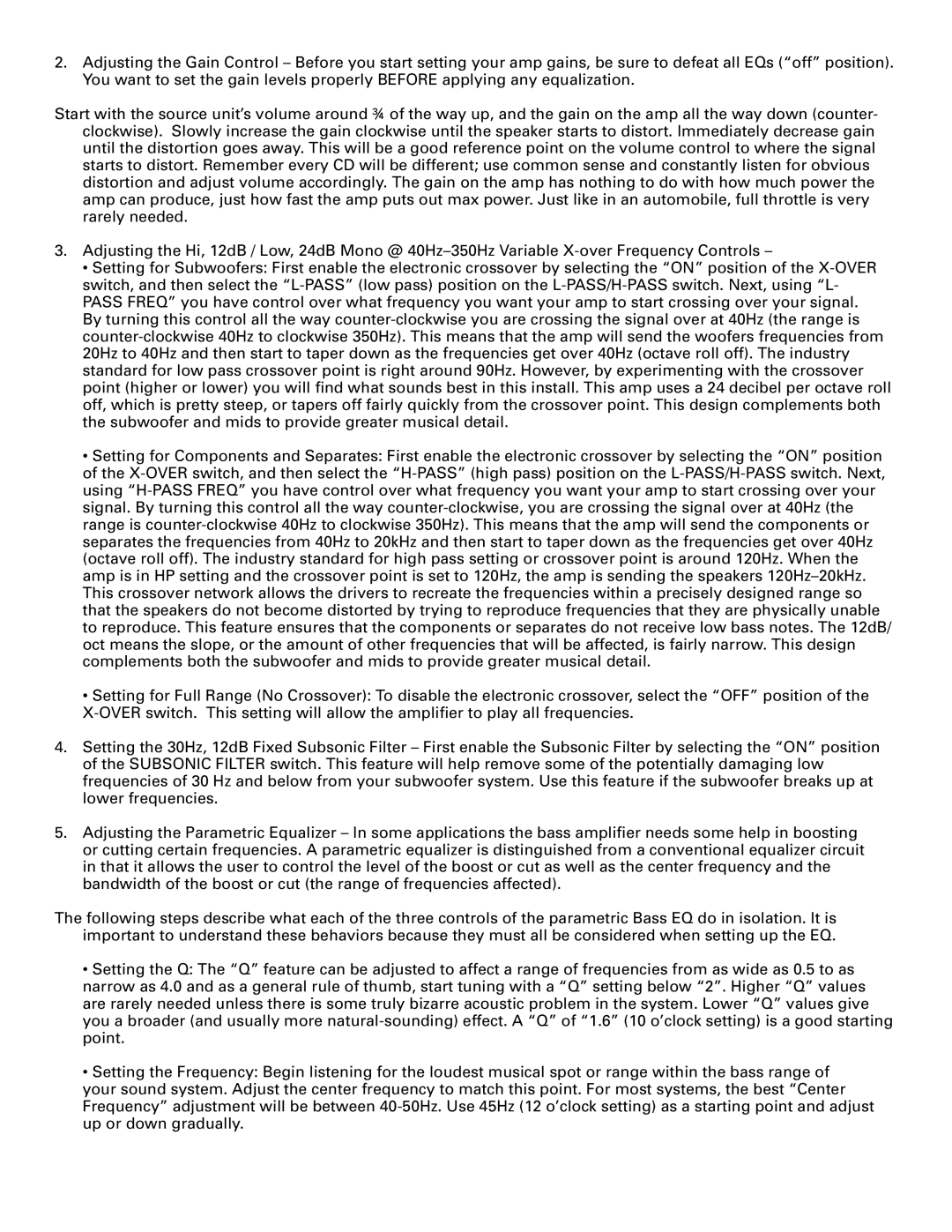2.Adjusting the Gain Control – Before you start setting your amp gains, be sure to defeat all EQs (“off” position). You want to set the gain levels properly BEFORE applying any equalization.
Start with the source unit’s volume around ¾ of the way up, and the gain on the amp all the way down (counter- clockwise). Slowly increase the gain clockwise until the speaker starts to distort. Immediately decrease gain until the distortion goes away. This will be a good reference point on the volume control to where the signal starts to distort. Remember every CD will be different; use common sense and constantly listen for obvious distortion and adjust volume accordingly. The gain on the amp has nothing to do with how much power the amp can produce, just how fast the amp puts out max power. Just like in an automobile, full throttle is very rarely needed.
3.Adjusting the Hi, 12dB / Low, 24dB Mono @
•Setting for Subwoofers: First enable the electronic crossover by selecting the “ON” position of the
•Setting for Components and Separates: First enable the electronic crossover by selecting the “ON” position of the
•Setting for Full Range (No Crossover): To disable the electronic crossover, select the “OFF” position of the
4.Setting the 30Hz, 12dB Fixed Subsonic Filter – First enable the Subsonic Filter by selecting the “ON” position of the SUBSONIC FILTER switch. This feature will help remove some of the potentially damaging low frequencies of 30 Hz and below from your subwoofer system. Use this feature if the subwoofer breaks up at lower frequencies.
5.Adjusting the Parametric Equalizer – In some applications the bass amplifier needs some help in boosting or cutting certain frequencies. A parametric equalizer is distinguished from a conventional equalizer circuit in that it allows the user to control the level of the boost or cut as well as the center frequency and the bandwidth of the boost or cut (the range of frequencies affected).
The following steps describe what each of the three controls of the parametric Bass EQ do in isolation. It is important to understand these behaviors because they must all be considered when setting up the EQ.
•Setting the Q: The “Q” feature can be adjusted to affect a range of frequencies from as wide as 0.5 to as narrow as 4.0 and as a general rule of thumb, start tuning with a “Q” setting below “2”. Higher “Q” values are rarely needed unless there is some truly bizarre acoustic problem in the system. Lower “Q” values give you a broader (and usually more
•Setting the Frequency: Begin listening for the loudest musical spot or range within the bass range of
your sound system. Adjust the center frequency to match this point. For most systems, the best “Center Frequency” adjustment will be between
